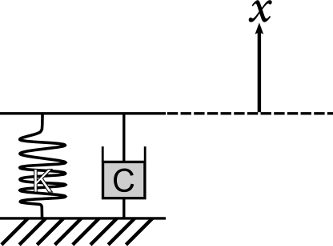Stiffness and Damping
During simulation, it is important that dynamic rigid bodies accurately behave and interact with the environment as they would in the real-world.
For interactions that are not completely rigid, Vortex® allows modeling soft interactions as spring-damper systems. In Vortex, spring refers to the entire spring-damper system.
Stiffness, usually denoted by k, is introduced to model the reaction force ( \( f_{spring} = k * x \)) generated due to a position violation x; while, the damping usually denoted by c, is a coefficient accounting for the drag force ( \( f_{drag} = c * v \)) proportional to the velocity (v).
Vortex generates the spring and damper reaction forces according to this model such that the position and velocity violations are reduced to zero.
Note Reaction force will always be zero when there is no violation as the coefficient scales the violation.
Uses for Stiffness and Damping
Stiffness and damping can be used in material properties as well as constraints:
- For Material properties, when a pair of objects collide, the properties of the pair determine the type of response for collision. Specifically, the material stiffness and damping settings decide how much give or penetration there will be between the objects and the amount of energy that will be lost in the bounce.
- For Constraints, the stiffness and damping of coordinate locks and limits can be modified analogously.
